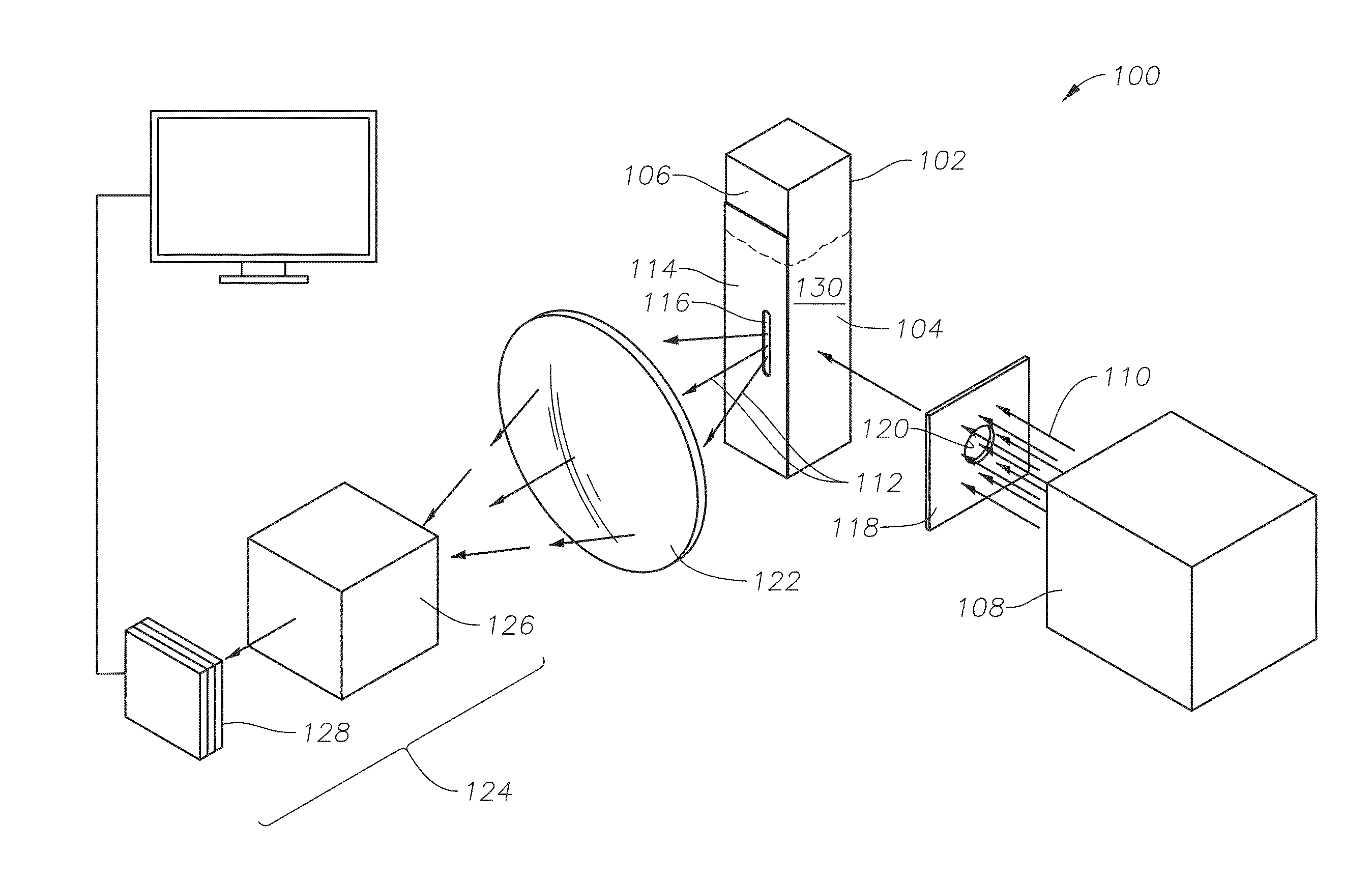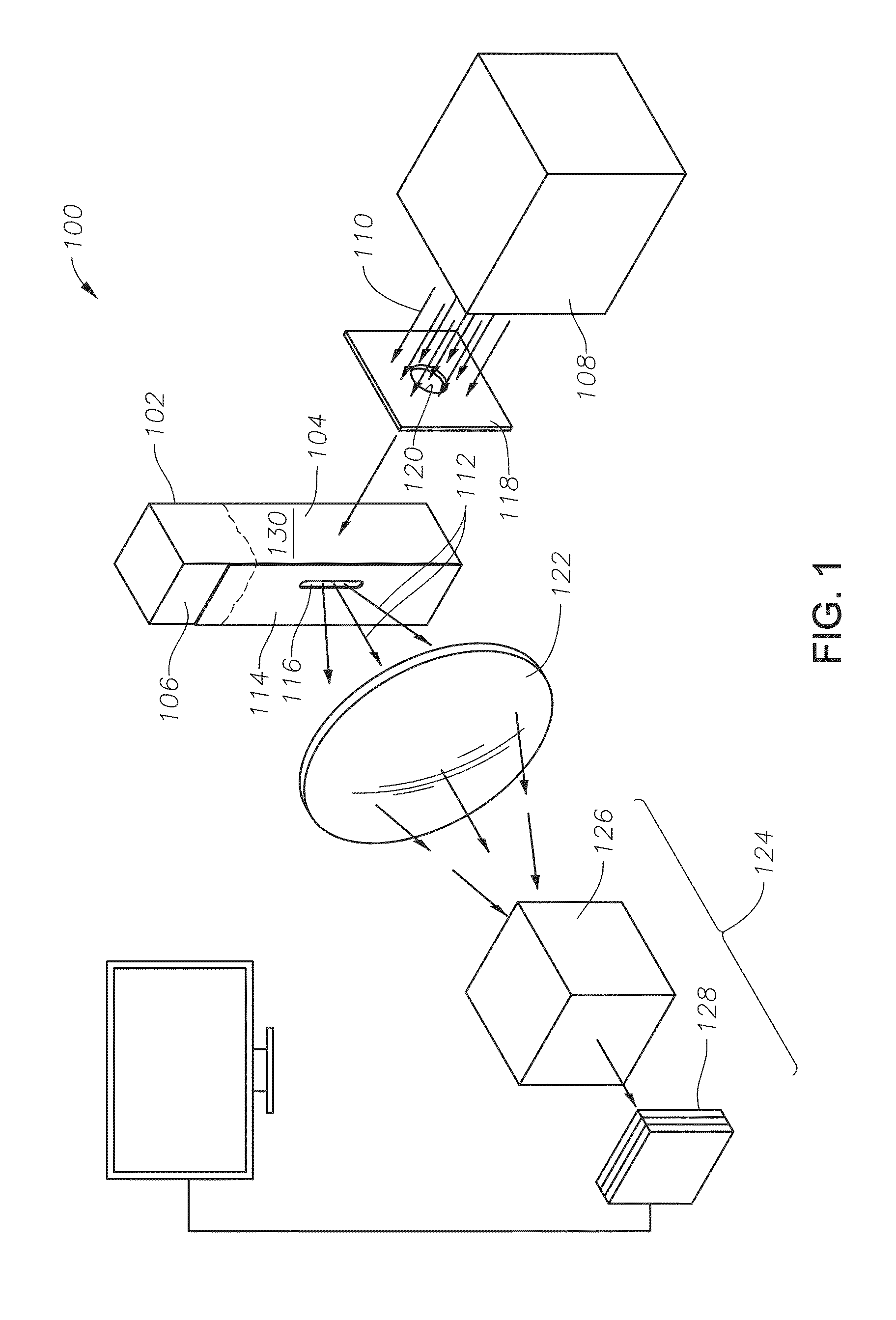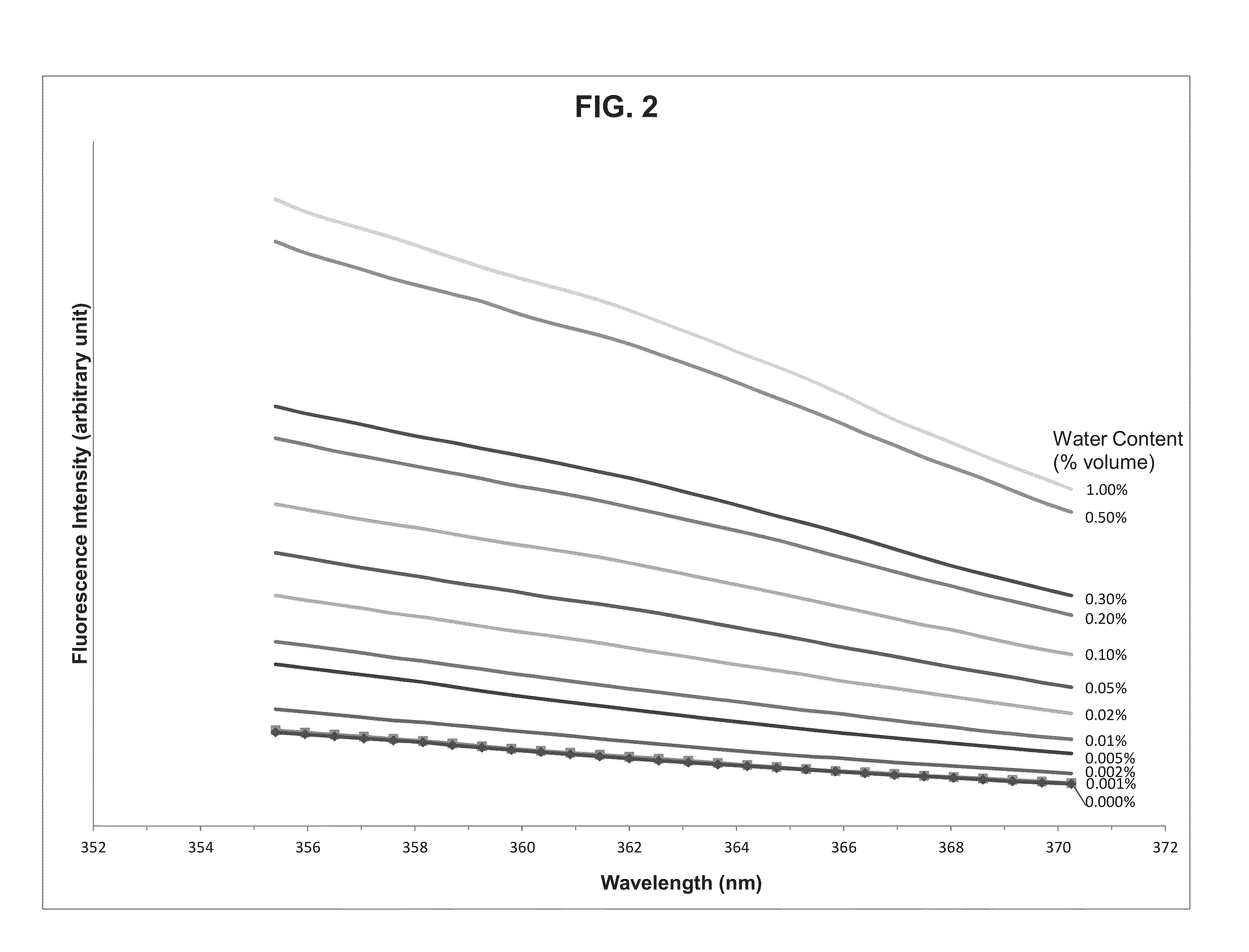Method for non-intrusive measurement of low water content in oil
a technology of low water content and measurement method, which is applied in the direction of measurement devices, material analysis through optical means, instruments, etc., can solve the problems of not being able to measure water concentration locally, methods are not well-adapted to the different design parameters, and it is more difficult to quantify or even identify water. , to achieve the effect of reducing the diameter of pulsed laser beam
- Summary
- Abstract
- Description
- Claims
- Application Information
AI Technical Summary
Benefits of technology
Problems solved by technology
Method used
Image
Examples
example 1
[0055]In Example 1, the oil-containing fluid was jet fuel grade kerosene. The sample of low water content fluid was created by collecting a sample of the jet fuel grade kerosene in a 1000 mL beaker and adding an amount of water. A pipette was used to add a known amount of distilled water to the jet fuel grade kerosene to create a low water content fluid having 7000 ppm water (corresponding to an amount of water of 1% by volume). The amount of water in the sample was controlled by using pipettes to add distilled water to the kerosene sample. A high-speed handheld blender was used to blend the sample by setting an angular speed of the mixing rotor of the blender to 13,500 rpm and allowing the sample to mix for a duration of 2 minutes. At the end of the blending step, the sample contained water droplets with a size distribution of 30 μm to 70 μm in diameter, with an average diameter of 50 μm. After the sample was blended, an eyedropper was used to take between 3 mL and 4 mL from the ap...
example 2
[0056]In Example 2, the fluorescence measurement process of Example 1 was repeated under identical conditions for samples having amounts of water of 7 ppm, 14 ppm, 35 ppm, 70 ppm, 140 ppm, 210 ppm, 350 ppm, 700 ppm, 1400 ppm, 3500 ppm, and 7000 ppm (corresponding to an amount of water in the low water content fluid of 0.001%, 0.002%, 0.005%, 0.01%, 0.02%, 0.05%, 0.1%, 0.2%, 0.5%, and 1% by volume, respectively). A volumetric water content between 0.001% and 1.00% corresponds to a water content in the sample between 7 ppm and 7000 ppm. For each sample, the fluorescence intensity of the sample was measured. FIG. 2 is a plot of the fluorescence intensity of each of the samples over a range of the fluorescence spectrum having wavelengths between 355 nm and 375 nm. The fluorescence intensity was integrated over the range of the fluorescence spectrum shown in FIG. 2 and plotted in three ranges corresponding to three orders of water content in the samples. The first range included samples ...
PUM
| Property | Measurement | Unit |
|---|---|---|
| diameter | aaaaa | aaaaa |
| diameter | aaaaa | aaaaa |
| wavelength | aaaaa | aaaaa |
Abstract
Description
Claims
Application Information
 Login to View More
Login to View More - R&D
- Intellectual Property
- Life Sciences
- Materials
- Tech Scout
- Unparalleled Data Quality
- Higher Quality Content
- 60% Fewer Hallucinations
Browse by: Latest US Patents, China's latest patents, Technical Efficacy Thesaurus, Application Domain, Technology Topic, Popular Technical Reports.
© 2025 PatSnap. All rights reserved.Legal|Privacy policy|Modern Slavery Act Transparency Statement|Sitemap|About US| Contact US: help@patsnap.com



